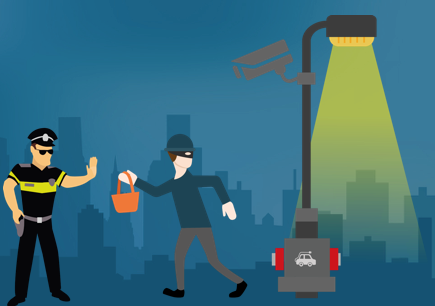There are many stories to show how the Internet of Things (IoT) accelerates innovation and permeates out daily lives. And of courses there are the ones of failure, long lead times, and exceeding budgets. The success stories unveil new customer value, improved services, and even new disruptive, business models. They talk about revenue and cost savings. About opening new markets and about reinvigorate others. The favorite stories of many are about unexpected newcomers to put incumbents to the risk of getting ‘Amazoned’.
 More in general, I agree with Grey Heron’s Chris Kocher: “Now is the time to decide how to build and monetize a sustainable business around your technology, IP and to IoT innovations”.
More in general, I agree with Grey Heron’s Chris Kocher: “Now is the time to decide how to build and monetize a sustainable business around your technology, IP and to IoT innovations”.
Throughout human history, stories have been powerful tools to explore, to share and to build common understanding. Today, with all these pervasive new technologies, stories on how to explore their potential and reap their benefits may be instrumental to individual organizations get hold on their future.
Nothing new, everything different
IoT is build on commonplace objects exchanging information with each other and with computers. It makes objects respond to one another. IoT is not a newly developed system. In fact, most of it is existing technology. Microcontrollers, sensors (measuring a physical quantity and transform this in an analogue or digital signal processed by a computer), actuators (transforming electrical signals in movement, sound or light), communication protocols, data processing and storage. They are all have been around for decades.

What’s new are the extreme lower cost of all these components. The impact of Moore’s law on the exponential growth of processing power can be rephrased as “Put processing power to the waste” or – more bluntly – “Digitize or Die”. The exponential growth of network capacity and ubiquitous communication prompt to “Put bandwidth to the waste” or – to paraphrase the former – “Connect or Die”. And then there are these enormous streams of data and the technology to store and process these data in the cloud.
The cloud is a technology defining the 21st century. It transforms IT to a service-based industry with its ability to rent computing services rather then owning and maintain the physical infrastructure and cumbersome software packages. In the cloud hardware or software resources are consumed as a metered, pay-as-you-go service. By outsourcing infrastructure or applications to the cloud, you lower your total cost of ownership by making fixed costs variable.
The trick today is not to invent a new gadget or software app. Today it is all about ingenious ways to cut and paste all these components. Storytelling is a wonderful way to help to discover the meaning of things. A storyteller explains and connects with his audience on an emotional level. The stories talk about feelings and try to get the same feeling to the audience. And do-it-yourself has never been easier. Open up for a flow.
Context matters
Disney’s ‘The Beauty and the Beast’ may be told to many. Boccaccio’s ‘Decameron’ should not be read to a kid. The location to tell a story, in other words, impacts the storyline. This holds for IoT.
If you are a large company, you want your story to discover the power to leverage your customer relations. Together with your customers, you generate insights into nascent needs and opportunities and test bed new offerings. If you are a start-up, you are fighting for your first customers. Then, a tight focus, the generation of feedback, rapid response and the creation of immediate traction appear to be key.
As an incumbent you may also want to leverage your installed customer base to partner with others to bring their offerings through your distribution channels. For a new entrant this make look the opposite. Cooperation with an incumbent creates opportunities to go to market effectively and to increase credibility.
Product companies with hardware devices may look for the ‘hardware premium’ and turn one-time sales into ongoing revenue streams. Service companies may add new value by integrating IoT devices and support them.
Pick your storyline
Stories touch your hart and focus on the key benefits you want to achieve. The driver in most IoT-stories is simple: reduce cost. Think: streamline operations, improve efficiency, shorten development cycles, reengineer operations, shorten supply chains or reduce inventory cost or the cost of customer acquisition.
Another set of stories focusses on the addition of revenue by selling new products, better satisfy customer needs, boost customer loyalty, reduce churn, enter new markets, create new business models or invent referrals.

In a third set of stories fillets and re-engineers a value chain and brings new business models:
Lean and structured thinking
With these kind of storylines comes a principled approach to new product development, Lean Start-up:

Working in a large institution. No sweat. The Internal Start-ups Cookbook tells about ways to develop new things to fit in the cooperation’s long-term vision and strategy and don’t come from its roadmap
Those who tell stories rule the world
In his plea to pertain to handicraft, the Dutch novelist Jamal Ouariachi urges the storyteller to hand facts and visualize thoughts, leaving conclusions, judgements and interpretation to the listener. But watch out: it is not simple to tell a good story. Experience shows it is hard work. You have to rework the script over and over again …. until it twinkles!
Pieter van Hoogstraten